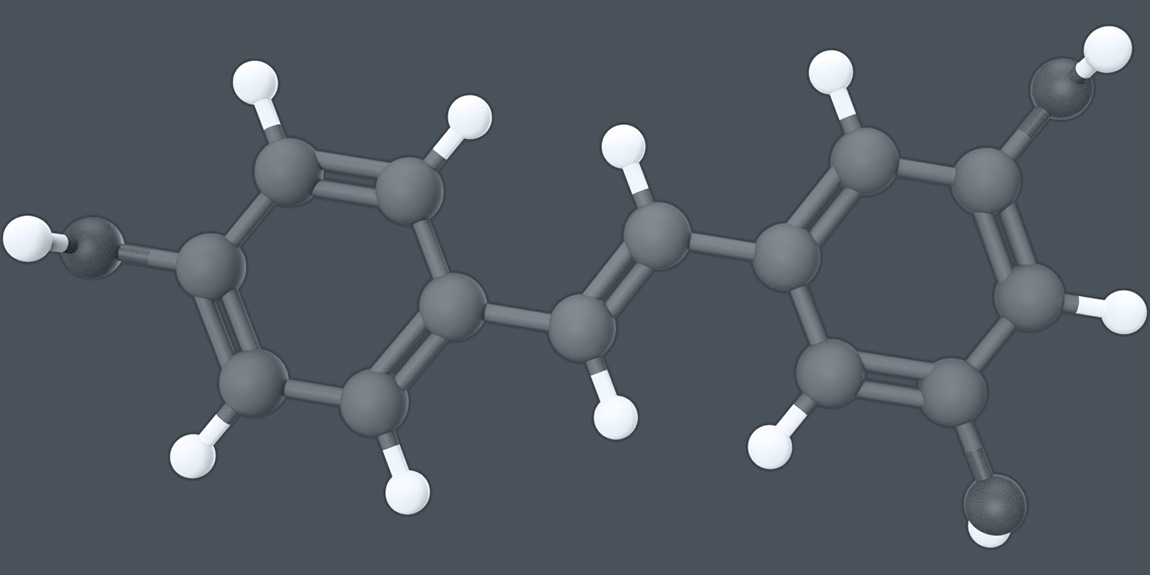
Resveratrol is a stilbenoid from a group of natural phenols. The top food sources of resveratrol include the skin of blueberries, grapes, mulberries, raspberries, and peanuts. Resveratrol is a compound that plants make to fight off microbial attackers, bacteria and fungi, as well as to withstand lack of nutrients or drought.
Resveratrol has been shown to have strong antioxidant and anti-inflammatory properties. Consumption of resveratrol was linked to a number of health benefits – protection of brain functions, high anticancer potential, reduced blood pressure, maintenance of liver metabolism, strengthening of the immune system, and lowered cholesterol.
Resveratrol has a wide variety of biological actions which can prevent the beginning of many diseases and manage their symptoms. Resveratrol can influence multiple inflammatory and non-inflammatory responses and protect organs and tissues by interacting with immune cells and Silent Information Regulator 1 (SIRT1). Resveratrol is a potential adjunct to pharmaceutical therapy due to its antiviral, antioxidant, anti-inflammatory, anti-apoptotic, cardioprotective, neuroprotective, and anticancer properties.
H – ingredient has HIGH impact on specified disease
M – ingredient has MEDIUM impact on specified disease
N – there is no data confirming the impact of the ingredient on specified disease